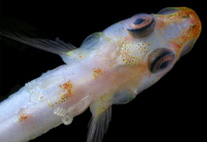Abstract
A new species of entomopathogenic nematode (EPN) named Steinernema balochiense n. sp. belonging to the family Steinernematidae was isolated from Psidium guajava L., rhizophere soil samples of Balochistan, Pakistan. This new species belongs to the carpocapsae group. The new species can be separated from other described species by morphological and morphometrics characteristics as well as DNA sequence polymorphisms. This new nematode species is morphologically characterized by features of infective juveniles (IJ) and males. For the IJ average body length was (455; 415–528) µm, distance from anterior end to excretory pore (35; 32–38) µm, pharynx length (90; 85–98) µm, tail length (44.3; 40–51) µm, D% and E% values (39; 36–44) and (80; 70–92), respectively. For male specimens, the diagnostic characters included total body length (1330; 1135–1632) µm, gubernaculum length (44.4; 40–47) µm, D% (43.8; 40–51) and ratio of GS (63.8; 53–75). Morphological diagnostic traits for new species include the presence of a funnel shaped gubernaculum at the proximal end. S. balochiense n. sp. differs from infective stage juveniles of closest species S. nepalense by having 6 ridges vs 7 ridges in the lateral field. Molecular phylogenetic trees based on sequence of ITS-rDNA, D2D3 regions and the mitochondrial 12S rRNA gene supports the description of this nematode isolate as a new species.

